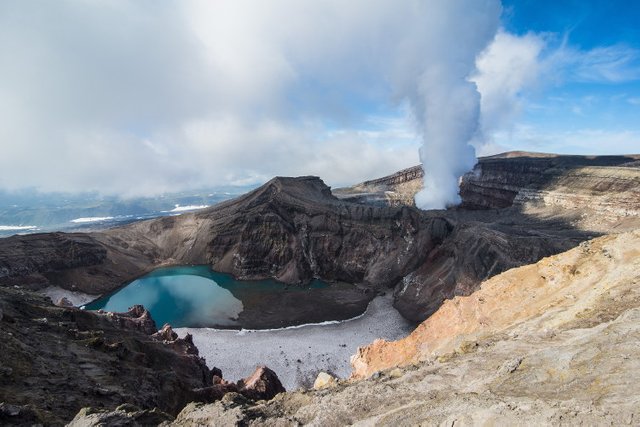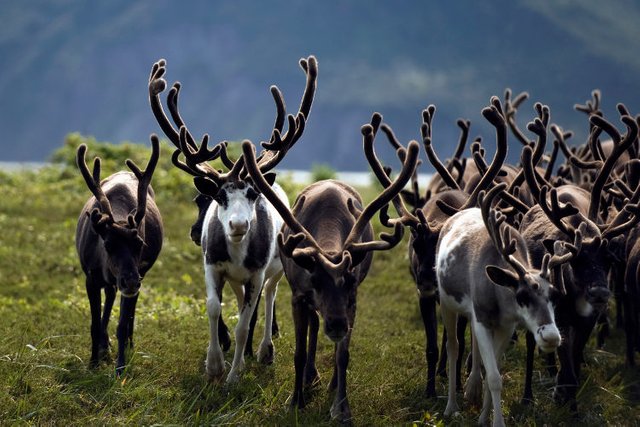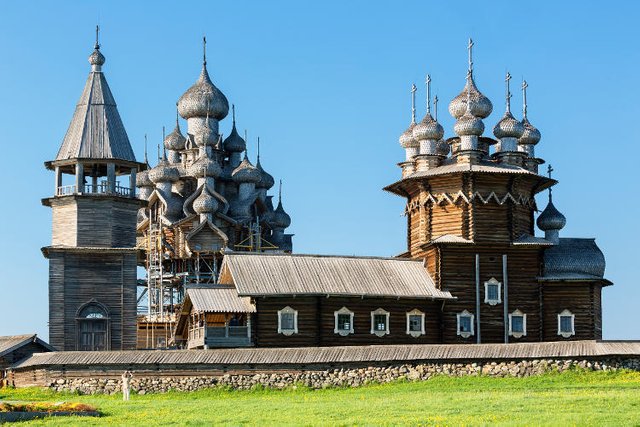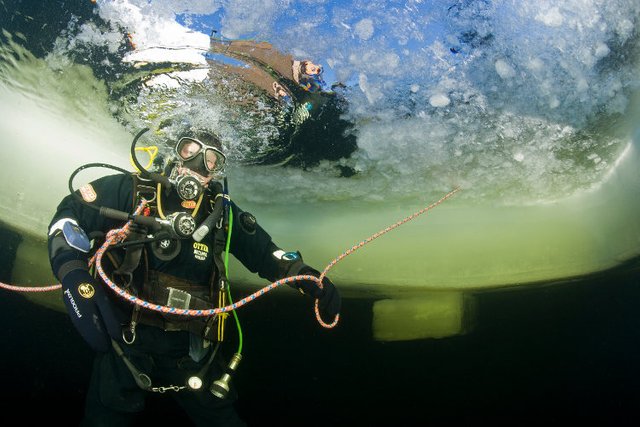The largest active volcano in the northern hemisphere and brown bear scooping up salmon – you can see both in Russia’s barely touched Kamchatka Peninsula. Without a doubt, this sub-Arctic, 1250km-long finger of land in Russian Far East is one of the top places on earth for pristine habitats and abundant wildlife, despite being covered in snow and ice most of the year.

Steaming fumarole on the Gorely volcano, Kamchatka. Image by Michael Runkel
Wildlife and volcanoes
One way to measure the unbelievable biological wealth of this region is to count the number of plants found here. Kamchatka is home to more than 1000 species of plants – and where there are a lot of different plants, you know you’re going to find a lot of animals. Little disturbed and scarcely explored, this area is populated with more than 15,000 brown bears, 10,000 snow sheep, 1500 reindeer, wolves, foxes, wolverines and sables – not to mention half of the world’s population of massive Steller’s sea eagles. Coastal areas are home to nine species of whales, huge seabird colonies and thousands of sea otters.
However, only a few thousand tourists a year make it to this remote and little-known region. In fact, scarcely 400,000 people live on the entire 472,000-sq-km peninsula and half of those live in Petropavlovsk, the only major city and the base camp for every expedition in Kamchatka. Visitors come for one of two reasons: to see the most impressive collection of volcanic features in the world, including the largest active volcano in the northern hemisphere, and to see abundant and remarkably peaceful brown bears feasting on millions of salmon.
Fortunately, you can do both at the Kronotsky Nature Reserve (kronoki.org), 200km northeast of Petropavlovsk and one of seven huge protected areas which together comprise the Unesco-listed Kamchatka Volcano Reserve. Explore Kronotsky’s famous Valley of the Geysers and the 10km-diameter Uzon Caldera, or check out Yuzhno-Kamchatsky Reserve (visitkamchatka.com) at the southern tip of the peninsula in August to witness the largest salmon run in the world and hundreds of bears at Lake Kurilskoe.

Reindeer herd in the Chukotka region, Kamchatka. Image by Danita Delimont
Murmansk
Russia’s northernmost port, dotted with largely uninspiring Soviet-era architecture, Murmansk is nevertheless a surprisingly lively and cosmopolitan place. You can play out your Cold War fantasies aboard Lenin, the world’s first nuclear icebreaker, check out show-stopping photos of the frozen Franz Josef Land at the Museum of the Northern Fleet, or get nostalgic over Zenit cameras and other USSR memorabilia at the Regional Studies Museum. Also sample the diverse dining scene, from the solidly Russian fare of folktale-themed Traktir Zhily-Bily to the imaginative Eurocentric dishes of hip lounge Terrasa and the fabulous salads and cocktails of the MTV generation’s Fusion.

Unesco-listed Transfiguration Cathedral, Lake Onega, Kizhi island. Image by Sylvain Sonnet
Kenozero National Park
For a taste of Russian rural life, head to the village of Lekshmozero, a scattering of wooden houses complete with a picturesquely crumbling church on the banks of Lake Lekshmo. It’s part of the Kenozero National Park, a patchwork of forests, lakes and historic wooden churches; the friendly visitors centre on the lakeshore can arrange accommodation in the nearby Fisherman’s Hut Hotel, including a traditional Russian banya (steamroom). As there are only two weekly buses here from Kargopol, it’s best to organise a tour with Lache Turbureau (lachetur.ru); in winter the tours include ice fishing.

Thank you for your attention. Have a good day!